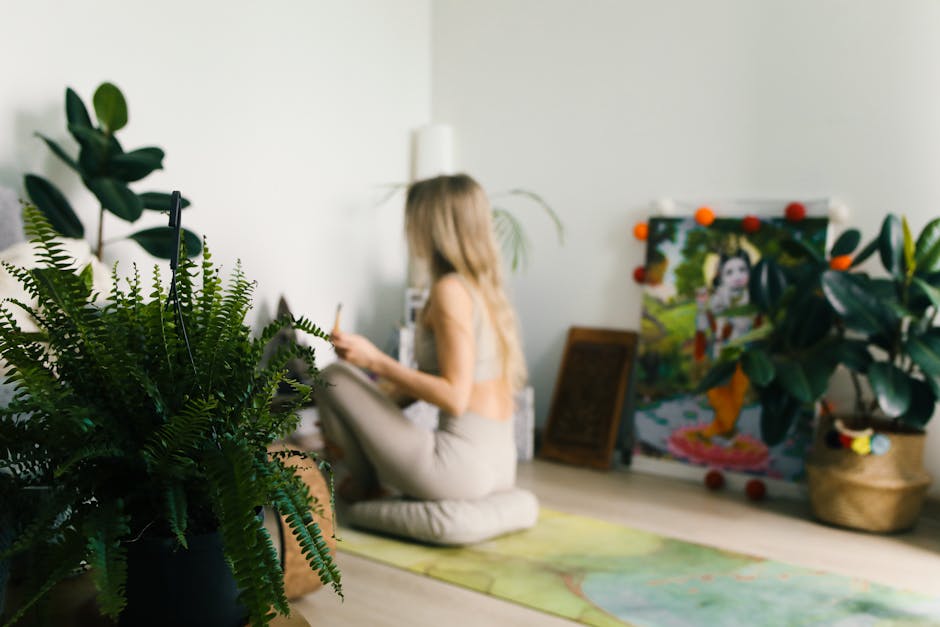Introduction
Hook: The Importance of Addressing Anxiety in Children
Childhood anxiety is a growing concern in today’s fast-paced world. With increasing academic pressures, social challenges, and global uncertainties, children are more prone to feelings of anxiety and nervousness. If left unaddressed, these feelings can significantly impact a child’s mental and physical health, academic performance, and overall well-being.
Fortunately, there are numerous tools and strategies available to help children navigate through feelings of anxiety. One such tool that has gained popularity in recent years is Gonoodle, a platform that uses physical activity and mindfulness exercises to help children manage their emotions and boost their mental health.
Let’s delve deeper into understanding anxiety in children, the role of physical activity in relieving anxiety, and how Gonoodle can be a game-changer in your child’s journey towards better mental health.

Photo by Polina Tankilevitch on Pexels
Understanding Anxiety in Children
Definition of Anxiety in Children
Anxiety in children is characterized by persistent worry, fear, or nervousness that is out of proportion to the situation at hand. It can manifest in various forms, including generalized anxiety disorder, separation anxiety, social anxiety, and specific phobias. It’s important to note that occasional anxiety is a normal part of childhood. However, when it becomes chronic and interferes with a child’s daily life, it is considered a disorder that requires attention and intervention.
Common Signs and Symptoms of Anxiety in Children
Children with anxiety may exhibit a range of physical, emotional, and behavioral symptoms. These can include excessive worry, difficulty concentrating, restlessness, irritability, sleep problems, and physical symptoms like headaches and stomachaches. They may also avoid situations or activities that make them anxious, leading to social withdrawal and academic difficulties.
Impact of Anxiety on Children’s Well-being
Anxiety can have a profound impact on a child’s well-being. It can affect their self-esteem, academic performance, social relationships, and physical health. Over time, untreated anxiety can lead to more serious mental health disorders, such as depression and substance abuse. Therefore, it’s crucial to address anxiety early and provide children with the tools they need to manage it effectively.

Photo by Polina Tankilevitch on Pexels
The Role of Physical Activity in Relieving Anxiety
Benefits of Physical Activity for Mental Health
Physical activity is a powerful tool for mental health. It can boost mood, improve sleep, reduce stress, and enhance self-esteem. Regular physical activity can also help children build resilience, which is the ability to bounce back from adversity and cope with life’s challenges. Furthermore, it can provide a healthy outlet for children to express their emotions and let off steam.
How Physical Activity Helps Reduce Anxiety in Children
Physical activity can help reduce anxiety in children in several ways. Firstly, it triggers the release of endorphins, the body’s natural mood boosters. Secondly, it provides a distraction from anxious thoughts, helping children break the cycle of worry and fear. Lastly, regular physical activity can improve sleep patterns, which is often disrupted in children with anxiety.
Release of Endorphins
Endorphins are chemicals produced by the body to relieve stress and pain. They interact with the receptors in your brain that reduce your perception of pain and trigger a positive feeling in the body, similar to that of morphine. During physical activity, the body produces more endorphins, leading to feelings of happiness and euphoria.
Distraction from Anxious Thoughts
Physical activity provides a natural distraction from anxious thoughts. It requires concentration and focus, which can help divert a child’s attention away from their worries. This can be particularly beneficial for children who tend to ruminate or get stuck in a cycle of negative thinking.
Improvement in Sleep Patterns
Regular physical activity can help regulate sleep patterns. It promotes better sleep quality and increases the duration of deep sleep, the most restorative stage of sleep. Good sleep is essential for managing anxiety, as it allows the brain to process emotions and consolidate memories.

Photo by Karolina Grabowska on Pexels
Introduction to Gonoodle
What is Gonoodle?
Gonoodle is a free online resource that encourages kids to be active and mindful with a series of fun and engaging videos. Available for free download, Gonoodle offers a variety of exercises, games, and activities designed to get kids moving and practicing mindfulness. Whether it’s through dance parties, yoga sessions, or breathing exercises, Gonoodle makes physical activity fun and accessible for kids of all ages.
How Gonoodle Promotes Physical Activity in Children
Gonoodle promotes physical activity in children by making it fun and engaging. The platform offers a wide range of videos that incorporate movement and mindfulness into playful and energetic activities. Kids can join in on dance parties, participate in virtual field trips, or engage in calming mindfulness sessions. The activities are designed to be short and easy to incorporate into the day, making it simple for parents and teachers to get kids moving and practicing mindfulness.
Overview of Gonoodle’s Features and Activities
Gonoodle offers a variety of features and activities to engage kids and promote physical activity. Some of the popular features include:
- Gonoodle Games: Interactive games that get kids up and moving.
- Gonoodle Videos: A wide range of videos featuring dance-alongs, yoga sessions, mindfulness activities, and more.
- Gonoodle YouTube Channel: A dedicated YouTube channel where kids can access a variety of Gonoodle videos.

Photo by Karolina Grabowska on Pexels
Using Gonoodle to Relieve Anxiety in Children
Incorporating Gonoodle into Daily Routines
Incorporating Gonoodle into your child’s daily routine can be a fun and effective way to help them manage anxiety. You can use Gonoodle videos as a break from homework, a morning wake-up routine, or a calming bedtime activity. The key is to make it a regular part of your child’s day, so they can reap the benefits of regular physical activity and mindfulness practice.
Specific Gonoodle Activities That Help Reduce Anxiety
Several Gonoodle activities are particularly effective in helping reduce anxiety in children. Here are a few to consider:
- Deep Breathing Exercises: Gonoodle offers several videos that guide kids through deep breathing exercises. These exercises can help kids calm their minds, focus their attention, and manage feelings of anxiety.
- Yoga and Mindfulness Activities: Yoga and mindfulness activities can help kids relax, focus, and manage stress. Gonoodle offers a variety of yoga and mindfulness videos that are fun and easy for kids to follow.
- Energizing Movement Breaks: Gonoodle’s energizing movement breaks can help kids release pent-up energy and reduce feelings of anxiety. These breaks can be particularly helpful during times of stress or when kids need a break from sedentary activities.

Photo by Leeloo Thefirst on Pexels
Additional Strategies to Combine with Gonoodle
Creating a Calm and Supportive Environment
While Gonoodle can be a powerful tool in managing anxiety, it’s also important to create a calm and supportive environment for your child. This can include setting up a quiet and comfortable space for your child to practice Gonoodle activities, providing positive reinforcement, and being available to talk about their feelings and concerns.
Encouraging Open Communication About Anxiety
Encourage your child to talk about their feelings of anxiety. Open communication can help your child feel understood and supported. It can also provide you with valuable insights into what triggers your child’s anxiety and how you can help them cope.
Seeking Professional Help When Needed
If your child’s anxiety is severe or persistent, it may be helpful to seek professional help. A mental health professional can provide a thorough evaluation and recommend appropriate treatment options, which may include cognitive-behavioral therapy, medication, or other interventions.

Photo by Leeloo Thefirst on Pexels
Conclusion
Recap of the Benefits of Using Gonoodle to Relieve Anxiety in Children
In conclusion, Gonoodle is a valuable tool that can help children manage anxiety through physical activity and mindfulness exercises. By incorporating Gonoodle into their daily routines, children can learn to navigate their feelings of anxiety, boost their mood, improve their sleep, and enhance their overall well-being.
Encouragement to Incorporate Gonoodle into Daily Routines for Better Mental Well-being
As parents and caregivers, it’s our responsibility to provide our children with the tools they need to thrive. By incorporating Gonoodle into your child’s daily routine, you can help them build resilience, manage anxiety, and lead a healthier, happier life. So why wait? Start your Gonoodle journey today and help your child embrace a brighter, more confident future.

Photo by Leeloo Thefirst on Pexels
For more information on managing anxiety in children, visit our pages on Separation Anxiety, Generalized Anxiety Disorder, and Physical Health. You can also explore our resources on Biofeedback and Breathing Exercises.
Remember, it’s okay to ask for help. If you’re concerned about your child’s anxiety, don’t hesitate to reach out to a mental health professional.
#GonoodleRelieveAnxiety #AnxietyRelief #Mindfulness #StressRelief #SelfCare



